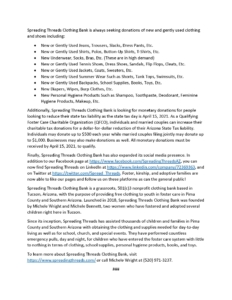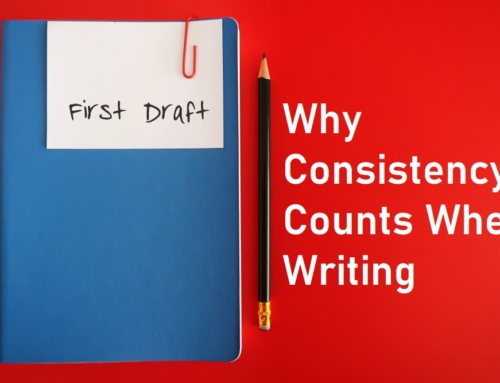By Christa Freer
A press release is a prepared business announcement that is sent out to a variety of media outlets. It is essentially a story pitch to journalists, bloggers, and other content publishers. Your press release must be newsworthy and comprehensive and grab attention and get your message picked up by news outlets.
Class: PR writes newsrooms tend to be understaffed and overworked, so journalists need “ready-made stories” handed to them “on a plate.” This is super important to remember when writing a press release for your business.
Although the primary goal of a press release is media coverage, other goals might include brand awareness, increased positioning within your industry, or sales. A piece by Fit Small Business suggests researching the audience of media outlets you’re targeting before writing your press release.
“A story that will be valuable to journalists’ audiences is one that’s more likely to get published and help accomplish your goal of media coverage,” according to the Fit Small Business piece.
Press releases offer an ideal opportunity to reach a large population. To make the most of the opportunities a press release has to offer, follow these seven steps to writing an effective statement that gives your business the boost it needs.
Step One: Dateline, Company Logo, and Headline
Starting at the very top, your press release must be dated and show where it’s coming from. This is called the dateline. Although this seems obvious, it’s important to remember because press releases are typically time-sensitive. Media outlets won’t be interested in old news. You may also wish to include your company’s logo at the top of the page, but it’s not necessary, especially if you’re saving room for more crucial content in your press release.
The headline of your press release is absolutely crucial. Just like a news headline has to grab the attention of the reader, a press release headline must grab the attention of the media.
Emma Sheppard, a journalist at The Guardian, says it’s common for her to receive upwards of 200 pitch emails a day. You need your story to stand out in the sea of subject lines, so focus on the most newsworthy angle. Use your headline to tell the reader how the announcement is timely, noteworthy, innovative, and why the public should be excited about it.
Step Two: Introductory Paragraph
Your first paragraph should include the news hook. A news hook is a critical piece of newsworthy information that captures the interest of the news media and the audience it serves.
Your introductory paragraph should also cover all of the bases: Who, what, when, where, why, and how. All of the core information for the story should be readily available to the reader in the first paragraph. It should be brief and easy to read. According to the aforementioned Class: PR article, “If your story isn’t immediately obvious, they will hit delete.”
Step Three: Secondary Paragraphs and Quotes
At this point the reader should be intrigued, so use your next couple of paragraphs to develop the story further. Include key pieces of information such as background on the product, person, or event you’re highlighting in your press release. This is also a good place to insert some quotes from a spokesperson. Choose spokespeople wisely, as they’re likely to be contacted for further interviews.
You’ll want to include quotes that emphasize the ‘how’ and ‘why’ of your story. Why should this story be covered in the media? How is this person, product, or event influencing good in the world? This section of the press release is where the emotion comes in. Don’t be afraid to really sell your passion for whoever or whatever you’re promoting!
Brigittelyons.com put together a great blog with seven ways to create a news hook a reporter can’t resist. She suggests the following methods for creating a terrific news hook for your press release:
• Add your twist to trending news (Think how your business can help with an issue cropping up in the news)
• Localize a national news story (COVID, economy, homelessness, environmental issues, etc.)
• Nationalize a local story (How does your project, event, product, or service match up locally with a national event, story, or product/service)
• Embrace your special knowledge (watch news pieces about your industry and offer up your specialized background knowledge to reporters covering news)
• Personalize Stats and Data (Apply big data and shocking statistics to your business, industry, or product/service)
• Reinvent the holiday story (Add to the holidays with your own way of celebrating it through your brand or business)
• Announcements Matter (If you have a new product, service, expansion, etc., share it)
Step Four: Body Copy
The next paragraph or two will bolster what you’ve already written. At this point, you should include more logistical information such as more details about where and when your product or event is available, how much it costs, and any relevant technical information. Be sure to include your website address and any social media pages people can visit for further information.
This is also the time to drive home your campaign’s key messages. A key message is different from the news hook.
According to Cutting Edge PR, key messages are “the essence of what you wish to communicate, bearing in mind that communication is not about what you say or send; communication is about what the receiver perceives it to be and what they do with it.”
Think of key messages as being the core tenets of the company you’re writing about — what is important to them? What sets them apart from other, similar companies?
Step Five: Closing Paragraph
Try ending your press release with a closing endorsement. The endorsement can come from a spokesperson you quoted earlier or someone else who gives your business further credibility.
“This paragraph helps the journalist see that you and your business are ‘ones to watch’ and are credible enough to write about,” according to the aforementioned Class: PR article.
At every stage of a press release, you’re looking to pique the media’s interest and convince them that whatever you’re writing about is newsworthy. The closing paragraph is your last chance to make a lasting impression!
Step Six: Contact Information
Be sure to include the contact information of whoever will be handling media inquiries. Include their full name, email address, phone number, and any relevant social media handles.
When you are ready to close out your press release, at the bottom following the last paragraph, center the word ‘END’ in all caps or add three hashtags (###). This is best practice and makes it clear to the reader that the material is complete. This is especially important if your press release happens to run more than one page. It’s also recommended to keep press releases as succinct as possible. One page is best but you can go to a second page if necessary.
Step Seven: Boilerplate
The last thing you need for an outstanding press release is a boilerplate. A boilerplate is essentially an ‘About Us’ section for the company you’re writing about. It should include a description of the business, its mission statement, and any other interesting details such as awards won or time in the industry. Again, this should be kept short and sweet. Think one paragraph of three to five sentences at most. If your press release has run long, this portion can be left off if necessary.
For more information about writing a captivating and interesting press release to get your business noticed, contact Wagner Freelancing at (806) 220-5272. You can also see the example press release below for a working outline.




